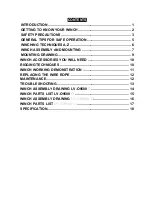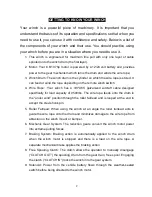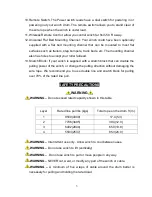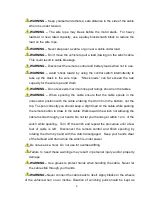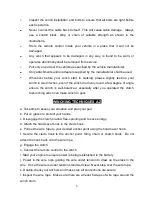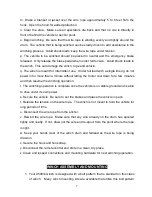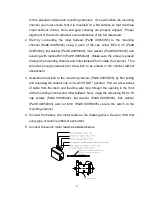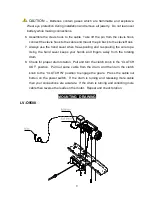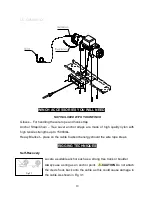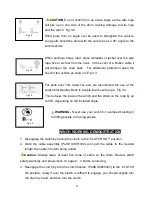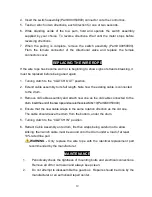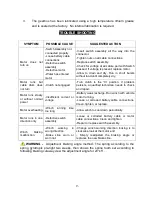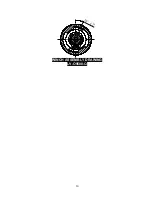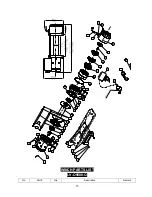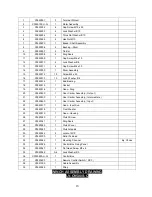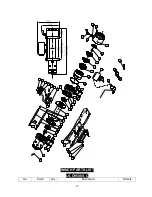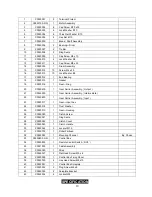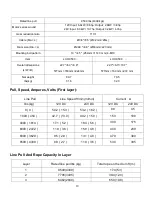
5
short as possible. If the motor becomes uncomfortably hot to the touch, stop
winching immediately and let it cool down for a few minutes. Do not pull for more
than one minute at or near the rated load.
CAUTION
–
If the motor stalls do not maintain power to the winch. Electric
winches are designed and made for intermittent use and should not be used in
constant duty applications.
CAUTION
–
Never disengage the clutch when there is a load on the winch.
CAUTION
–
Use the
hand saver hook when handling the hook for spooling or
un-spooling the wire rope.
GENERAL TIPS FOR SAFE OPERATION
The 9,500lbs and its all-derivative types are rated at 9,500 lbs capacity when
spooling the first rope layer on the drum. Overloading can damage the
winch/motor/ or wire rope. For loads over 70% of rated line pull, we
recommend the use of the pulley block/snatch block to double the wire rope
line. This will aid in two ways: a) reduce the number or rope layers on the
drum, as well as, b) reduce the load on the wire rope by as much as 50%.
When doubling the line back to the vehicle, attach to the frame or other load
bearing part.
The vehicle engine should be kept running during operation of the winch to
minimize battery drain and maximize power and speed of the winch. If the
winch is used for a considerable amount of time with the engine off, the battery
may be drained and too weak to restart the engine.
Get to know your winch before you actually need to use it. We recommend that
you set up a few test runs to familiarize yourself with rigging techniques, the
sounds your winch makes under various loads, the way the cable spools on the
drum, etc.
Inspect the wire rope and equipment before each use. A frayed or damaged
rope must be replaced immediately. Use only the manufactur
er’s replacement
rope with the exact specifications.


